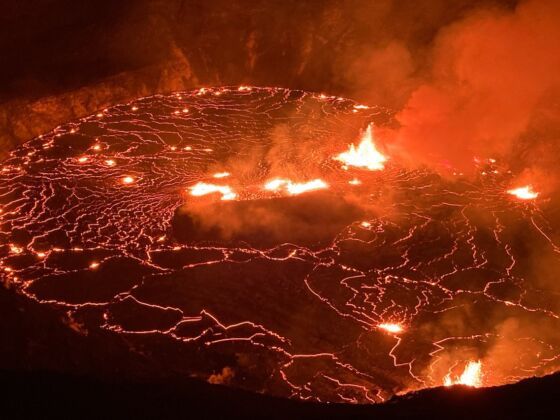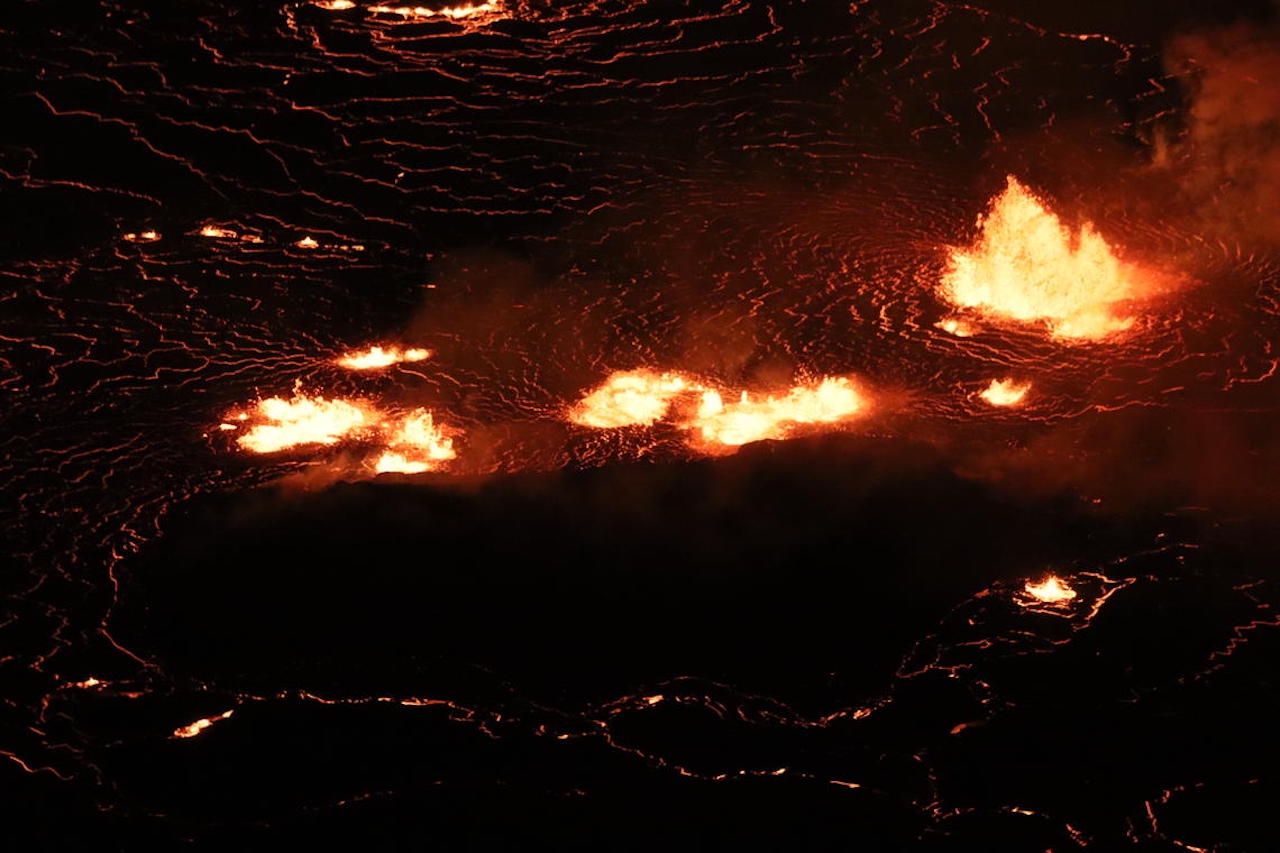On September 29, Kīlauea volcano, on the big island of Hawai’i in Hawai’i Volcanoes National Park, started to erupt. The summit, called Halema’uma’u crater, is turning into a lava lake as cracks opened in the crater’s wall and floor.
The latest eruption is currently in what government officials describe as the opening phase, which can be “dynamic and uncertain.” And you can see close up photos of the whole thing thanks to United States Geological Survey (USGS) cameras.



